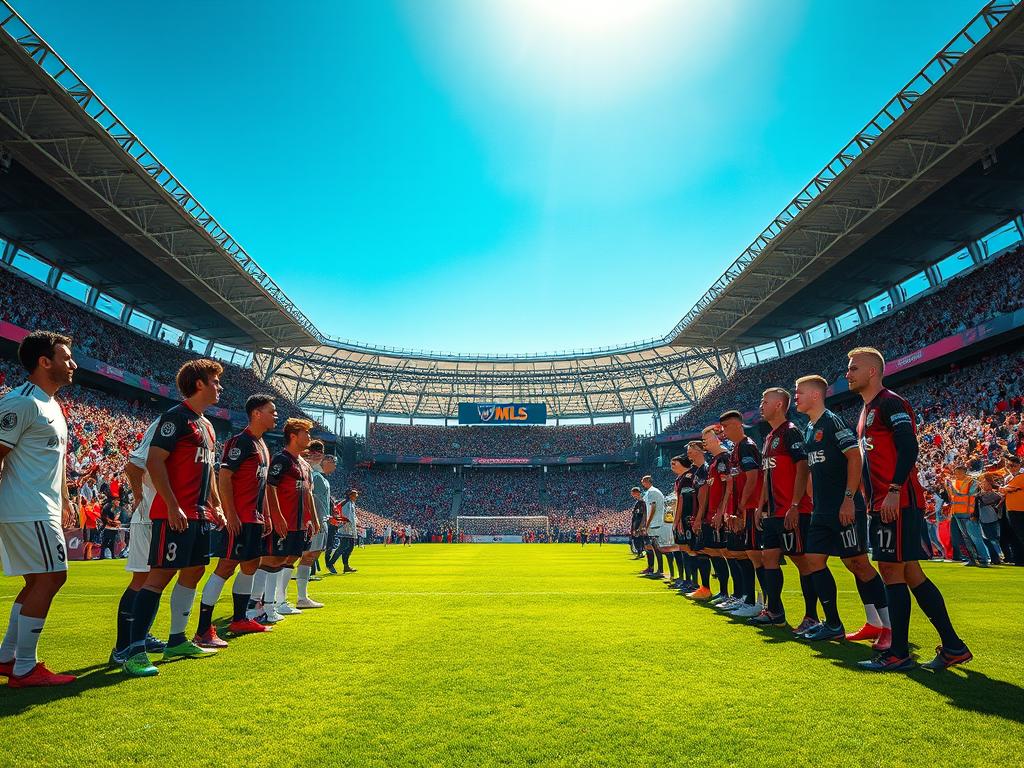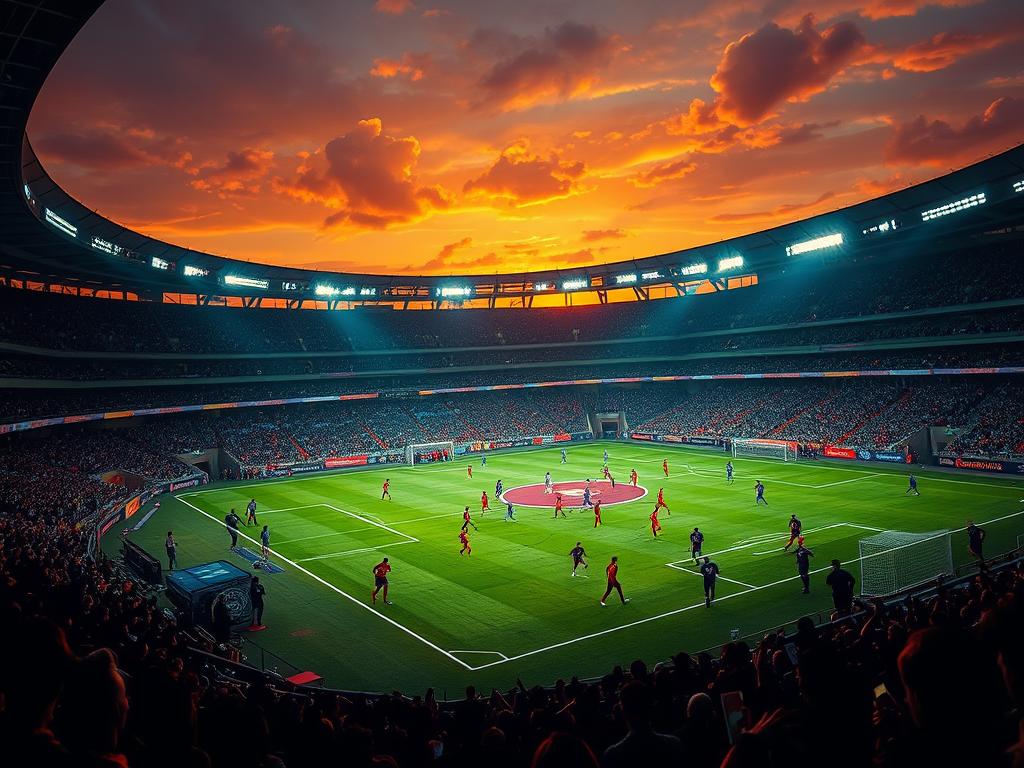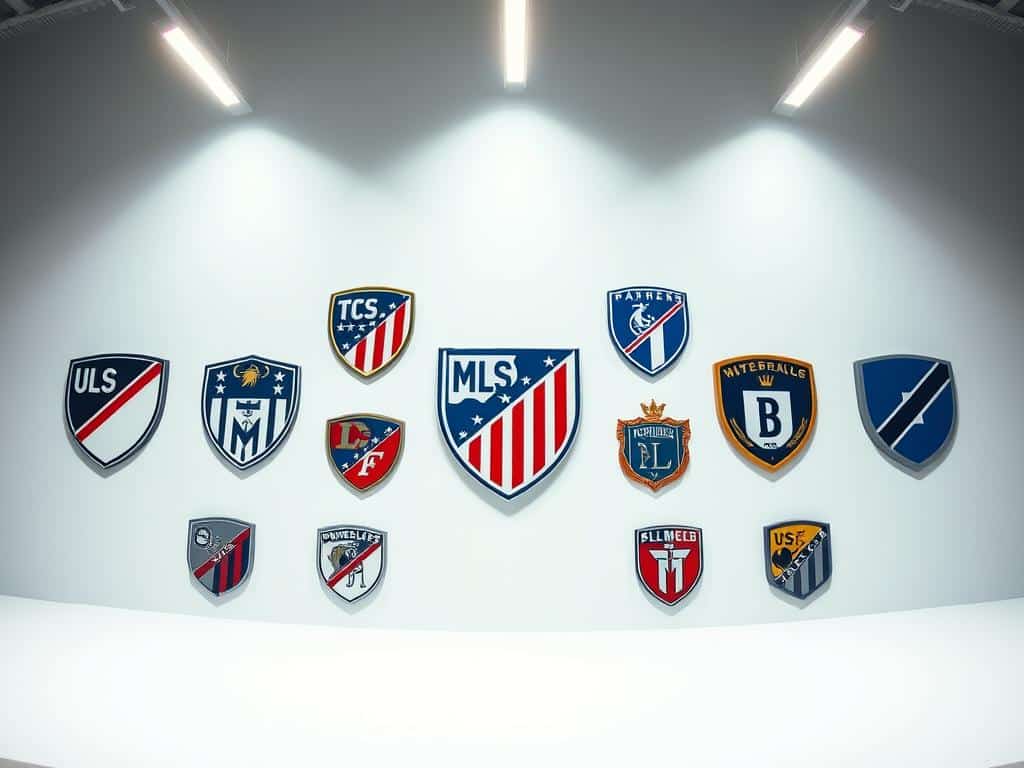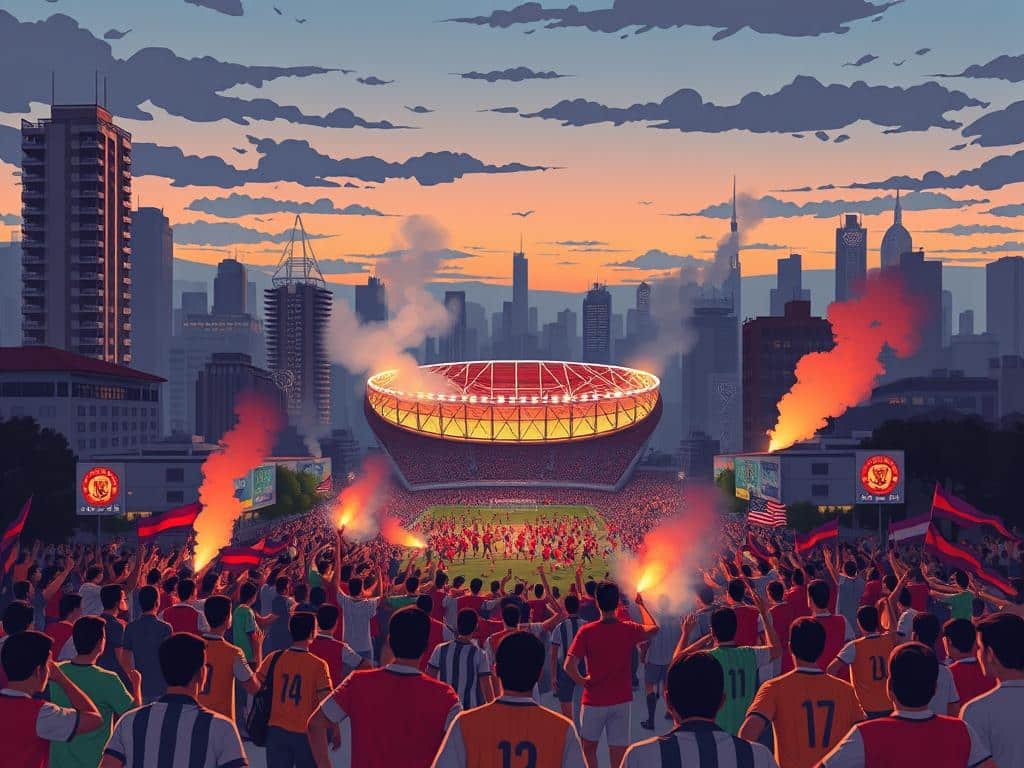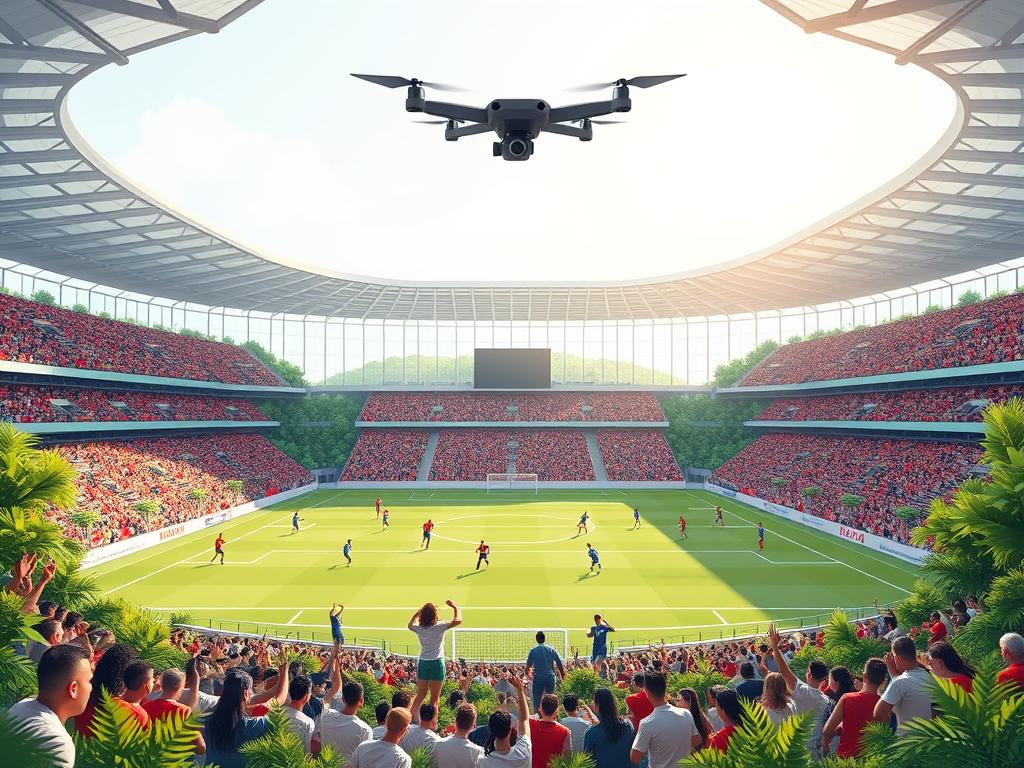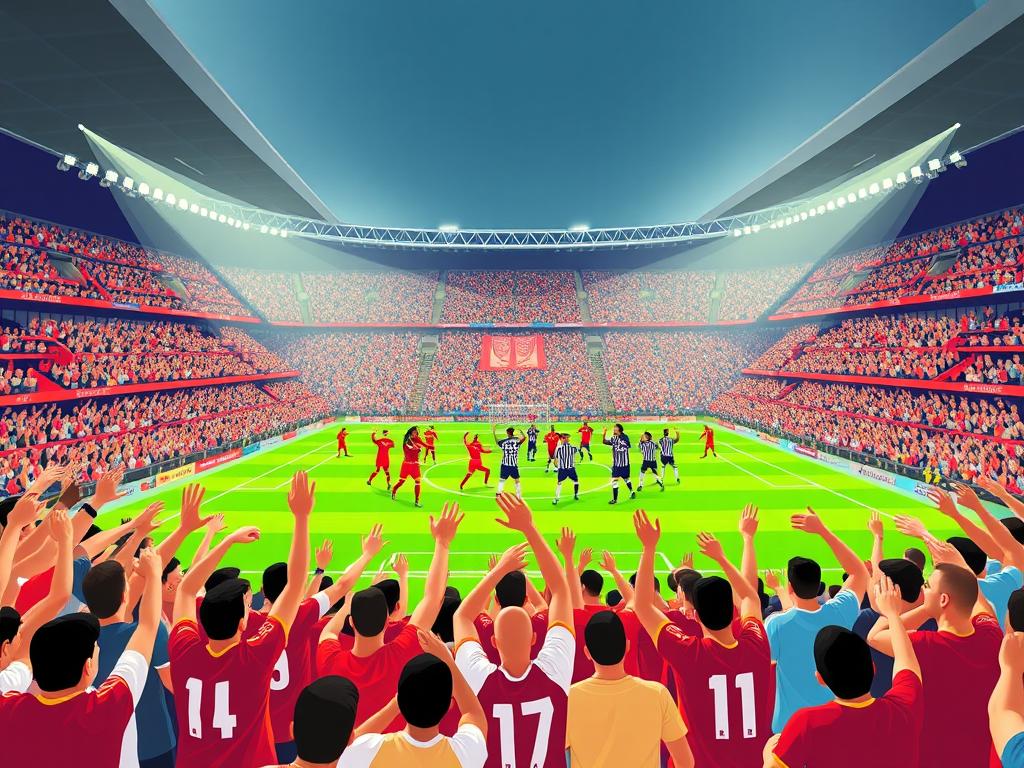Ever wondered how Major League Soccer kicked off its iconic all-star game tradition? Back in 1996, the league launched its first showcase event at Giants Stadium, pitting the East against the West. This thrilling matchup wasn’t just about fun—it helped put American soccer on the map.
The debut game was part of a FIFA doubleheader, blending global appeal with homegrown talent. Fans saw rising stars compete, proving the league had serious potential. Over time, this annual game became a catalyst for expansion, growing from 10 teams to nearly 30 today.
Want to know how this spectacle shaped the sports landscape? Let’s dive into the exciting beginnings of a beloved team-focused tradition.
The History of MLS All-Star Games: Humble Beginnings
In 1996, Giants Stadium roared to life as soccer took center stage in the United States. The all-star game held there wasn’t just a match—it was a celebration of the sport’s growing roots in America.
You could feel the energy as 78,416 fans packed the stands in East Rutherford. The East edged out the West 3-2, with legends like Marco Etcheverry dazzling the crowd. Coaches handpicked the first rosters, years before fan voting became a tradition.
Why Giants Stadium? New Jersey’s thriving soccer culture made it the perfect launchpad. The game held that day was part of a FIFA doubleheader, pairing MLS stars with a World All-Stars vs. Brazil clash. Talk about a global moment!
This debut proved American soccer had star power. From the electric atmosphere to the fierce competition, it set the stage for decades of unforgettable moments.
How the MLS All-Star Game Format Evolved
A major shift in 2003 transformed how MLS All-Stars competed globally. Gone were the East vs. West matchups—instead, the league aimed higher, pitting its best against international clubs. This bold move redefined the all-star game format, turning it into a must-watch spectacle.

From Conferences to Global Clubs: The 2003 Shift
Chivas de Guadalajara was the first opponent in this new era. The MLS All-Stars vs. Chivas match drew 27,000 fans, proving the appeal of cross-border rivalries. By 2005, the league faced giants like Premier League champions Chelsea and Manchester United.
These games weren’t just exhibitions—they were credibility boosters. MLS held its own, with a 7-8 record against European teams from 2005–2019. The game MLS showcased wasn’t just fun; it was fiercely competitive.
Liga MX vs. MLS: A New Continental Rivalry
In 2021, the liga all-stars mls clash took center stage. The penalty shootout win (3-2) over Liga MX ignited a fiercer regional rivalry. Fans loved the intensity, and players treated it like a cup final.
This format sticks because it matters. Unlike friendlies, these games test pride and skill. Whether facing the English Premier League or Liga MX, the MLS All-Stars vs. world format keeps fans on the edge.
Memorable Moments in MLS All-Star Game History
Some matches define an era—these showdowns did just that for American soccer. Whether shocking European giants or battling regional rivals, these games proved the league’s growing prowess. Let’s relive three iconic performances that still give fans chills.
2014: MLS Stuns Bayern Munich 2-1
Portland’s Providence Park erupted when the MLS All-Stars vs. Bayern Munich ended in a historic upset. Landon Donovan, playing his final season, orchestrated the attack with veteran precision. A 70th-minute Bradley Wright-Phillips goal sealed the win against the reigning Bundesliga champions.
You could feel the disbelief as Bayern’s stars struggled to break the defense. This wasn’t just a friendly—it was a statement. The victory showed global fans that U.S. soccer could compete with elite clubs.
2006: Chelsea Defeated by De Rosario’s Heroics
Dwayne De Rosario’s bicycle kick in 2006 remains legendary. Facing Premier League winners Chelsea, his 70th-minute volley flew past Petr Čech. The 1-0 win at Columbus Crew Stadium marked the first time MLS toppled a reigning European champ.
Fans still debate whether it’s the greatest goal in game history. That moment symbolized the league’s rising talent—proving homegrown players could shine against the best.
2021: First Shootout Win Against Liga MX
The 2021 clash with Liga MX was pure drama. After a 1-1 draw, penalties decided the winner at Banc of California Stadium. MLS goalkeepers saved three kicks, clinching a 3-2 shootout victory.
This wasn’t just bragging rights—it fueled a fiercer North American rivalry. The 2021-2022 matchups gained new intensity, drawing record TV audiences hungry for more.
The All-Star Skills Challenge: Showcasing Talent
Skills take center stage in this electrifying pre-game spectacle. Since 2019, the all-star skills challenge has let players flaunt technical mastery beyond regular matches. Think laser-guided passes, acrobatic volleys, and pinpoint crossbar hits.
Fans love the Shooting Challenge presented by AT&T. Here’s how it works: competitors fire at targets with escalating point values. The 2024 edition adds a twist—NWSL and Liga MX Femenil stars join the fun, making it soccer’s most inclusive skills fest.
Meet this year’s headliners: Inter Miami’s Sergio Busquets and Tigres’ André-Pierre Gignac. These legends dominate the Cross & Volley Competition, where one-touch finishes earn extra points. Want to train like them? Plant your non-kicking foot beside the ball and strike with your laces.
- Crossbar Challenge: Players aim to hit the bar from 30 yards—no rebounds allowed.
- Dribble Dash: Speed meets control in a slalom through defenders.
- Team Relay: Squads race to complete passing circuits flawlessly.
Why does this matter? The skills challenge proves soccer’s artistry thrives beyond goals. Whether you’re a casual fan or aspiring pro, these drills reveal what makes elite players extraordinary.
MLS All-Star Games and Player Legacies
For rising stars, an All-Star nod isn’t just an honor—it’s a career-defining moment. Think about Clint Dempsey and Tim Howard. Their standout performances here catapulted them to Premier League stardom, proving this stage opens doors.
Why do European scouts circle this event? Since 2010, 23 MLS players earned transfers after dazzling here. Young talents like Columbus’ Cucho Hernández use it to showcase their potential. One game can rewrite a career.
Even legends like Messi understand its weight. Despite missing the 2024 match with injury, his inclusion signaled the major league’s growing prestige. Teammate Luis Suárez’s presence further highlighted its global appeal.
Past MVPs tell the story. Kaká and David Villa parlayed their All-Star fame into iconic team leadership roles. Landon Donovan’s 2014 MVP performance cemented his status as U.S. soccer royalty.
- Scouting hotspot: 70% of transferred players were scouted at this event.
- Youth impact: Rising stars average 40% more post-game social media growth.
- Legacy builder: 8 of the last 10 MVPs now coach or broadcast.
This isn’t just a game—it’s a launchpad. Whether you’re a rookie or a legend, the lights here shine brighter than anywhere in the league.
Driving MLS Expansion Through All-Star Events
Host cities gain more than just bragging rights when the spotlight shines on their stadiums. The Columbus Crew proves this with their third hosting honor in 2024, following matches at Crew Stadium in 2000 and 2005.
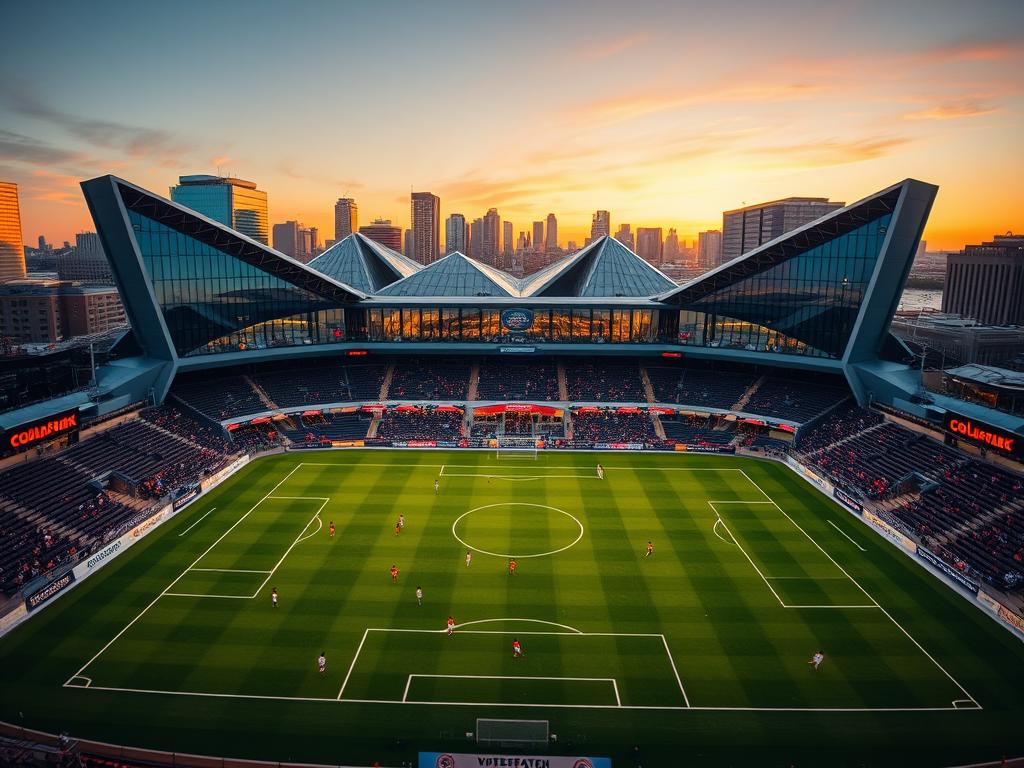
Why does rotation matter? Moving the event across the United States introduces soccer to new fans. Austin’s Q2 Stadium gets its turn in 2025, continuing the league’s push into growing markets.
The economic boost is staggering. Each host city sees over $25 million in local spending. Hotels, restaurants, and shops thrive when 20,000+ fans arrive for the game held in their backyard.
- Stadium upgrades: Columbus’ $314M Lower.com Field project included premium suites for this event
- Youth engagement: Host cities report 40% more youth league sign-ups post-game
- Global exposure: International broadcasts showcase host city landmarks
Look at the Columbus Crew’s legacy. Their 2024 match at Lower.com Field capped two decades of soccer growth in Ohio. From grassroots programs to downtown development, these games leave lasting footprints.
Next stop: Austin. The league’s strategy is clear—use these spectacles to plant flags in passionate soccer communities. When the lights come on, everyone wins.
Criticisms and Challenges of the All-Star Format
The 2023 Arsenal rout exposed cracks in the all-star game model that fans can’t ignore. That 5-0 loss raised hard questions—is this format helping the league grow, or just risking player health for spectacle?
Mid-season fatigue becomes real when stars face elite clubs. Last year, three players picked up knocks before crucial league matches. Coaches like Columbus’ Wilfried Nancy now push for scheduling changes: “We need rest days before these high-intensity games.”
Debates rage about opponent selection too. The Liga MX rivalry brings fire, but European teams draw bigger crowds. A 2024 fan survey showed 68% prefer keeping international foes—yet 42% want more competitive matchups.
Roster selection flaws surfaced after the Arsenal blowout. Critics noted too many veterans were chosen over in-form youngsters. “It’s about balance,” says LAFC’s Steve Cherundolo. “Honor legends, but showcase rising talent too.”
Solutions are emerging:
- Safety first: Adding mandatory recovery periods post-game
- Hybrid formats: Mixing Liga MX and European opponents annually
- Dynamic rosters: Letting coaches replace injured players up to kickoff
This isn’t just about sports—it’s the league‘s global reputation on the line. As the 2025 game approaches, all eyes are on how MLS addresses these growing pains.
The Future of the MLS All-Star Game
What’s next for soccer’s most dazzling summer showcase? The 2024 clash with Liga MX hints at bigger changes ahead. Post-2026 World Cup, insiders predict hybrid formats—maybe even CONCACAF Champions League ties.
Messi’s presence could reshape everything. Imagine global icons turning this into North America’s answer to Soccer Aid. The league already plans to expand All-Star Week with youth clinics and fan festivals.
Think bigger than one game. Deeper Liga MX collaboration means fiercer rivalries and united fans. New horizons await, and you’ll want front-row seats.

